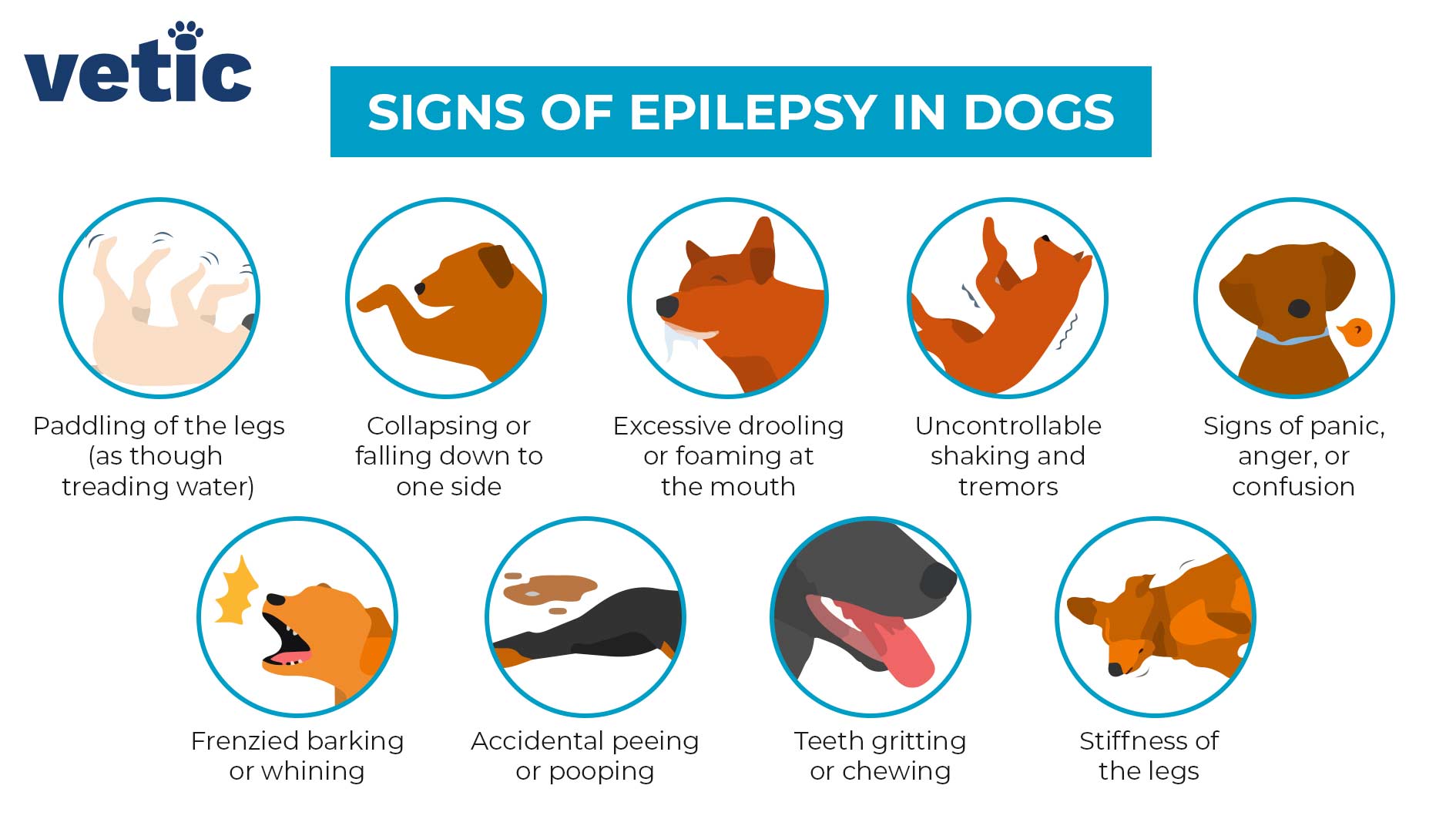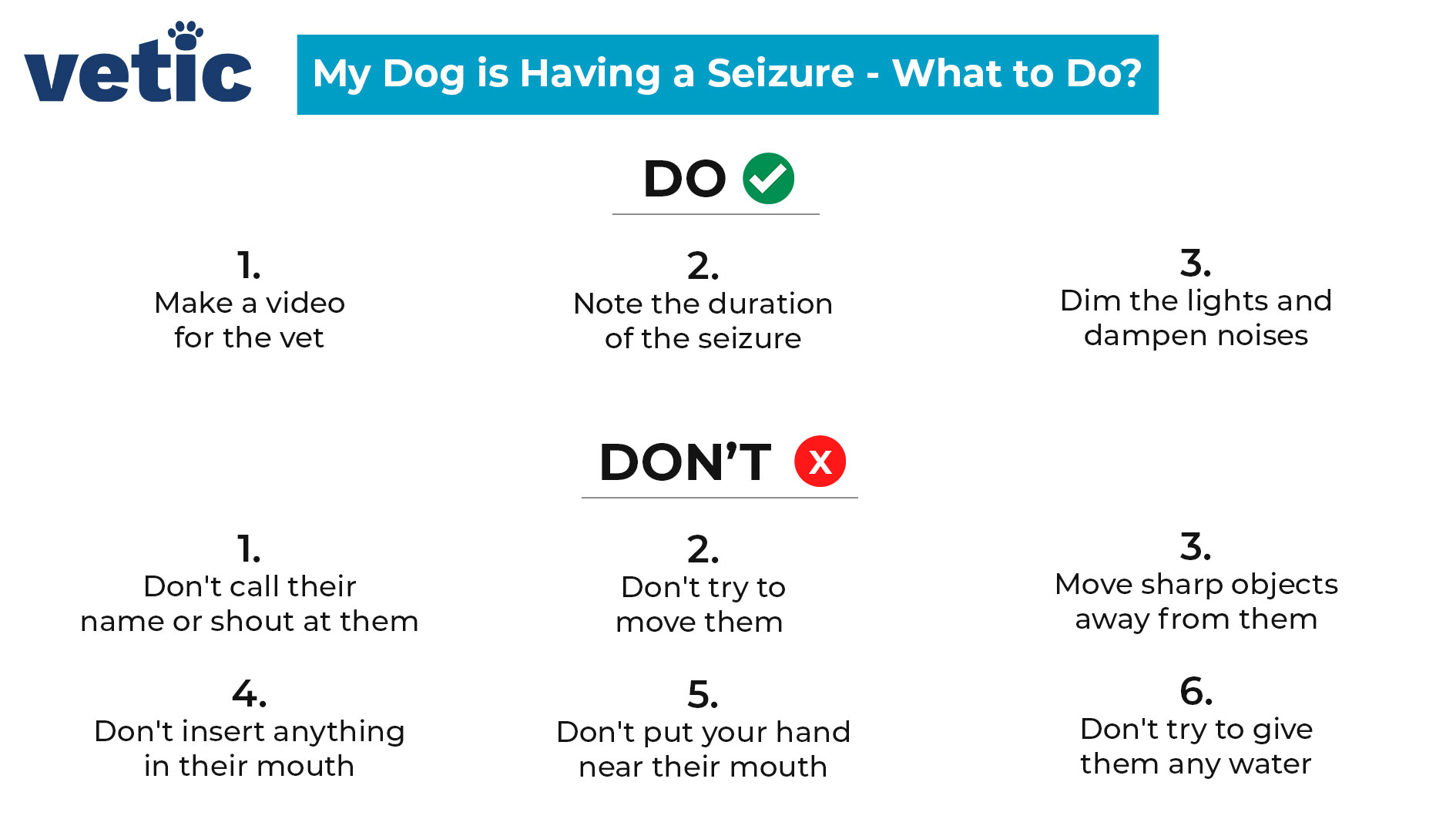What is Epilepsy in Dogs?
Epilepsy in dogs is more common than we think. 75 out of 1000 dogs have epilepsy. It affects the brain. It is characterised by multiple seizures that do not have a common cause.
Epilepsy or seizures are caused by improper electrical activity inside the dog’s brain. While the structure of the dog’s brain remains normal, there is aberrant electrical activity in the cortices.
In most cases, epilepsy doesn’t have an external cause, such as toxicity, viral infections or head wounds. These cases are referred to as primary (idiopathic) epilepsy in dogs.
The electrical signals begin in one part of the brain and spread to the other parts. These can result in involuntary movements and fainting. The common results of this event include shaking, twitching and convulsions.
If you notice signs of epilepsy in your dog, do not wait. Visit a veterinary hospital near you as soon as possible.
What Causes Epilepsy in Dogs?
Although epilepsy can be inherited in many dogs, the exact cause of epilepsy is unknown. After all known causes of seizures are ruled out, only then a veterinarian can conclusively diagnose epilepsy in a dog.
Any dog with primary or idiopathic epilepsy will experience their first seizure between the ages of 6 months and 5 years of age.
Which Breed is Most Predisposed to Epilepsy in Dogs?
Some breeds of dogs are predisposed to epilepsy due to their genetics, including –
- German Shepherd (GSD)
- Beagle
- Dachshund
However, there are some breeds with a high incidence of epilepsy without any genetic link. These dog breeds prone to epilepsy: –
- Labrador retriever
- Golden retriever
- Boxer
- Cocker spaniel
- Collie
- Irish setter
- Poodle
- Saint Bernard
- Siberian Husky
If you own a pet belonging to any of these breeds, ensure you take them for regular veterinary checkups. Keep a close eye on their behaviour as they grow up. Look out for any of the signs mentioned in the sections below.
What Does a Seizure or Epilepsy Episode Look Like in Dogs?
Seizures or epilepsy in dogs may be easily confused with fainting (cardiovascular abnormalities). As a pet parent, it is extremely emotionally draining for you to see your pupper in discomfort, but you will have to understand the 3 different stages through which an epileptic episode proceeds –
Aura
This is a pre-seizure phase during which a dog can feel the seizure setting in. Most humans suffering from epilepsy also experience something similar. During the aura, your dog might become restless, afraid, anxious or aggressive. It can be extremely difficult for pet parents to recognise this behaviour.
Ictal (seizure)
Ictal refers to the seizure that may last 1 to 2 minutes only. Some seizures last shorter than 1 minute. However, if your dog experiences an ictal (seizure) episode that lasts longer than 5 minutes or multiple seizures in one day, you should take them to an emergency veterinary clinic near you.
Postictal (post-seizure)
After the twitching, convulsions or tremors, your dog will likely be very disoriented. During this time, try to leave your dog alone unless they are showing severe signs of distress. They might be confused, scared or even aggressive. Your dog might need 10 minutes to 1 hour to become normal.
In sharp contrast, dogs that experience a cardiovascular episode (fainting spell) will be alright within a couple of minutes only.
What are the Different Types of Epilepsy in Dogs?
Not all seizures or epilepsies look the same. Knowing the three main types of epilepsy in dogs can help you understand if your dog is epileptic and which type they are experiencing.

Grand Mal (Generalised) Seizures
Grand Mal or Generalised seizures are the most common among all dog populations. During a grand mal seizure, a dog falls over to their side before convulsing or shaking violently.
The dog’s limbs may become stiff, they may or may not drool excessively, their eyes may remain closed or half-open, and they may also poop or pee themselves.
Nonetheless, during a seizure, you should NEVER call your dog, try to move them or wake them up. If they are close to an edge or near a sharp object, guard them carefully. Avoid loud noises and bright lights.
If possible, try to take a video of the ictal and postictal episode for your veterinarian’s consideration.
Focal or Partial Seizures:
It is a less common form of seizure or epilepsy in dogs. In a partial seizure, only one part of the body is involved, such as the leg or face.
Sometimes, a partial or focal seizure can spread and result in a Grand Mal or generalised seizure.
One of the most common examples of focal seizure in dogs is the “chewing gum” seizure. During a “chewing gum” seizure, a dog may repeatedly open and close their mouth as if they are chewing gum. Nonetheless, they will be unconscious.
Complex Partial Seizures:
Complex partial seizures are also known as behavioural or psychomotor seizures. It may look like “abnormal” behaviour rather than an episode of epilepsy in dogs.
For example, the dog will remain conscious but act differently. The dog may become hysteric or angry. Dogs may even hallucinate during a complex partial seizure. One of the most common examples of complex partial seizures is “fly biting” seizures where the dog may appear to chase and bite an imaginary fly.
What are the Symptoms and Signs of Epilepsy in Dogs?

The clinical signs of epilepsy in dogs include –
- Stiffening of legs and body
- Sudden collapse to a side
- Chewing motion of the jaws
- Excessive drooling
- Severe shaking, convulsing and paddling of legs
- Urinating and defecating
- Vocalisation
A dog experiencing a seizure may not experience or show all 7 signs of epilepsy at one go. However, it does not rule out an epilepsy diagnosis.
How is Epilepsy Diagnosed in Dogs?
A video of an epileptic episode is invaluable for the diagnosis of primary epilepsy in dogs. If not, the pet parent should make a note of how long the seizure lasted, the duration of the postictal episode and the detailed description of the seizure.
Epilepsy is a diagnosis of exclusion. The veterinarian will conduct a thorough physical examination of the pup. They will also recommend complete blood tests, serum biochemistry tests, and urinalysis. Along with these tests, the vet may also recommend chest X-rays and abdominal USG to rule out other causes of seizures in dogs.
If all tests come back normal, the veterinarian may refer you to a veterinary neurologist. If more advanced testing is available, such as CT scan, MRI and cerebrospinal fluid (CSF) testing, they will be conducted. After thorough observation and revision of the test reports the vet neurologist can confirm an epilepsy diagnosis in dogs.
What is the Treatment of Epilepsy in Dogs?
Sadly, epilepsy is a lifetime condition. There is no known cure for epilepsy in dogs.
A number of treatments for epilepsy in dogs do work. Some vets recommend traditional medication that controls seizures. Other veterinarians may recommend supplements such as CBD oil for dogs along with anti-epileptic medicines for reducing the intensity and frequency of seizures.
Typically, a combination of anti-epileptic medications along with nerve-support supplements are prescribed by the veterinarian for the treatment of seizures in dogs.
The treatment typically lasts life-long. The goal of epilepsy treatment in dogs is not to cure the condition but to reduce the frequency of seizures. According to international standards, control is achieved when the number of seizures are reduced to fewer than 1 every 3 months.
Is Epilepsy in Dogs an Emergency?
Epilepsy in dogs can become an emergency if you notice any of the following signs –
- A seizure episode lasting for longer than 5 minutes.
- Repeated back-to-back seizures or cluster seizures, or prolonged generalised seizures.
- Multiple (more than 3) seizures within 24 hours.
All types of seizures can heat up your dog. If your dog is experiencing cluster seizures, think about cooling them down. Soak their belly, paws and upper part of their head with a wet towel and switch the fan and AC on.
Get in touch with an emergency veterinary care centre immediately. Do not wait for the seizures to stop. Prolonged Grand Mal seizures and cluster seizures can be life threatening for a dog.
How can You Manage Your Dog’s Epilepsy or Seizures?

It can be emotionally draining to watch your dog experience a seizure. Nonetheless, you must remember that medication will take some time to work. If you do not see any difference between 7 and 10 days, you must reach out to your veterinarian.
Your dog can resume normal activities once the medicines begin to take effect. Do not miss a dose. Ask your veterinarian in advance what you should do if you miss a dose. And keep the contact details of your emergency veterinarian handy.
Your veterinarian will recommend follow-ups along with complete blood count and serum biochemistry to monitor the effects of the anti-epileptic drugs. Many dogs require readjustment of doses (dose reduction) over the years depending on their frequency of seizures.
Are there Specific Triggers for Epilepsy in Dogs?
The most prominent trigger of epilepsy in dogs is stress. It can be stress due to loud noises, separation, travel or moving to a new location.
Speak to your veterinarian regarding the induced stress and its effects if you suspect stress-induced seizures in your dog.
How to Choose a Puppy Who will be Less Prone to Epilepsy?
The only way to choose a puppy that may be less prone to epilepsy in their adulthood is by doing a thorough healthcare check of their parents.
Both parents must be at least 4 years of age and should not have any incidence or history of seizures.
If possible, get in touch with the puppy parents of previous litters to learn about health complications including epilepsy.
You can also choose a breed that’s at a lower risk of epilepsy such as Great Dane, Maltese, Chow Chow, Pomeranian, Indian Spitz, Shih Tzu, Rottweiler or Doberman.
While picking out a puppy remember that they will become a part of your family and life. So, consider their breed-specific and healthcare requirements before you bring them home.
